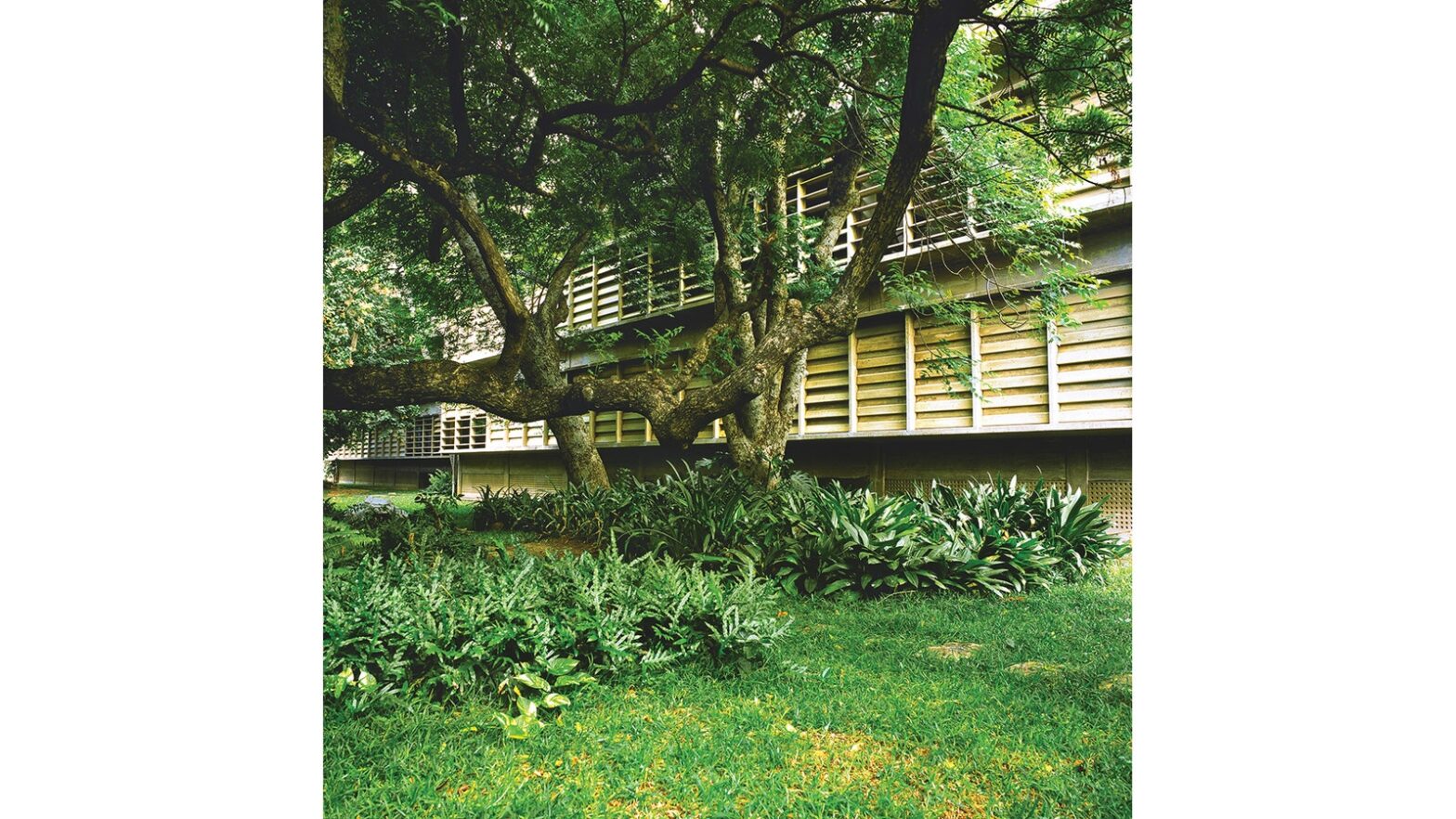This is the first reinforced-concrete structure in India, predating Chandigarh’s and Ahmedabad’s modern architecture.
Golconde in Pondicherry was completed in 1945. It was built as a dormitory for members—ashramites, as they are called—of the Sri Aurobindo Ashram. It might be easily overlooked from the street, but walk through the singular discreet wooden door with a lotus engraving on it, and it stands tall as if in silent contemplation. This modernist beauty, the first reinforced-concrete structure in India, predating Chandigarh’s and Ahmedabad’s modern architecture, was designed by American architect Antonin Raymond and later completed by George Nakashima, who also became a member of the ashram. Nakashima’s fine wood furniture is in use throughout the rooms.
For our craftsmanship issue, AD invites Pankaj Vir Gupta and Christine Mueller to share a few pages out of their monograph on Golconde. The AD100 architects have authored ‘Golconde: The Introduction of Modernism in India’, an in-depth study of the building, the second edition of which releases this September. In this portfolio, the architects share gorgeous details, archival images and an essay recalling their discovery of this modernist icon.
By Pankaj Vir Gupta and Christine Mueller | It was on a sweltering, humid June afternoon that we disembarked from our bus outside the Seaside Guest House in Pondicherry. Our journey from the Chennai airport to the sand-scrubbed majestic forms of the Shore temple at Mahabalipuram felt akin to time travel. Driving along the East Coast Road, the grey- and-white waters of a placid sea emerged as a landscape of relief, especially after the cacophony of Chennai. After four weeks of journeying across India, with 12 architecture students from the United States in tow, the cadence of the surf, and the electric green of the swaying coconut palms soothed our frayed senses. Our documentation of medieval and modern paradigms of South Asian architecture had led us from New Delhi to Jaipur, Chandigarh, Ahmedabad, Kochi, Madurai and, finally, Pondicherry. Situated scenically on the coast of the Bay of Bengal, this former French colonial enclave was intended as a respite—a place where we could compile our notes, study hundreds of photographs and drawings, assimilate our impressions of the built legacy of the subcontinent, and savour the offerings of this curious Indo-French outpost.
Within the austere grey-and-white walls of the Sri Aurobindo Ashram, meandering through the carefully swept streets, we felt enveloped by a sense of order, calm and serenity. Our olfactory radar led us to the Ashram perfumery, a high-ceilinged and cool room, where a selection of Ashram distillations—frangipani, sea salt and lime, hibiscus and khus—refreshed our spirits. With senses enhanced by this restorative interlude, we walked towards the local bazaar, across the large drain. This drain had been the historical border between the French colonial enclave and the ‘Tamil town’. As we approached the intersection of the streets Rue Dupuy and Rue d’Orleans (also known as Manakula Vinayagar Koil Street), the lights and din of the evening bazaar were palpable, even from a distance. In the fading light, we found ourselves alongside a high boundary wall, its exposed concrete surface draped with foliage—carefully trimmed arcs of bougainvillea and jasmine blossoms. A polished teak door—crafted with some care, and adorned simply with a diminutive brass ornament, a lotus flower—beckoned beguilingly. Our gaze wandered skyward, toward the swaying coconut palms visible beyond the wall, and it was then that we caught our first glimpse of an extraordinary facade: hundreds of concrete louvres, arrayed in a grid, their tips catching the fading pink light of the setting sun. This was ‘Golconde’!

